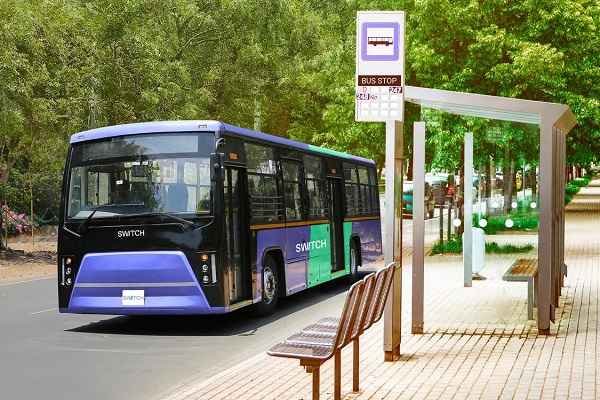Public transport plays a crucial role in reducing the carbon footprint of urban areas and promoting environmental sustainability. As cities around the world grapple with the challenges of climate change and urban congestion, public transportation systems offer a viable solution to cut greenhouse gas emissions and support greener lifestyles. In this article, we’ll explore how public transport helps reduce carbon emissions, its benefits, and strategies for maximizing its environmental impact.
1. The Environmental Benefits of Public Transport
Reduction in Greenhouse Gas Emissions
Public transport systems, including buses, trains, and trams, are more efficient than individual car travel in terms of fuel consumption and emissions per passenger. By moving more people with fewer vehicles, public transport significantly reduces greenhouse gas emissions.
- Efficiency: Public transit vehicles typically have a lower carbon footprint per passenger compared to private cars.
- Emission Reduction: By decreasing the number of private vehicles on the road, public transport helps lower overall emissions of CO2 and other pollutants.
Decrease in Traffic Congestion
Reduced traffic congestion is another benefit of public transport that indirectly contributes to a lower carbon footprint. Fewer cars on the road lead to smoother traffic flow and less idling, which in turn reduces fuel consumption and emissions.
- Congestion Relief: Public transport helps alleviate traffic congestion, leading to fewer emissions from stop-and-go traffic.
- Air Quality Improvement: Reduced congestion improves air quality by decreasing the concentration of vehicle emissions in urban areas.
2. Promoting Sustainable Urban Development
Efficient Land Use

Public transport encourages more efficient land use by supporting higher-density development around transit hubs. This can reduce the need for sprawling urban development and promote walkable communities.
- Transit-Oriented Development: Building neighborhoods around transit stations fosters compact, mixed-use developments that reduce reliance on cars.
- Reduced Sprawl: Effective public transport systems can help mitigate urban sprawl and preserve green spaces.
Encouraging Sustainable Lifestyles
Access to reliable public transportation can influence people to adopt more sustainable lifestyles by reducing their dependence on private vehicles. This shift can lead to lower overall carbon emissions and increased use of eco-friendly modes of transport.
- Behavioral Change: Regular use of public transit can encourage individuals to make more sustainable transportation choices.
- Integration with Other Modes: Public transport systems often integrate with cycling and walking infrastructure, further promoting sustainable living.
3. Challenges and Opportunities
Challenges Facing Public Transport
Despite its benefits, public transport faces several challenges that can impact its effectiveness in reducing carbon emissions. Addressing these challenges is essential for maximizing the environmental impact of transit systems.
- Funding and Investment: Insufficient funding and investment can limit the development and expansion of public transport infrastructure.
- Service Reliability: Ensuring timely and reliable services is crucial for encouraging widespread use of public transport.
Opportunities for Improvement
Innovative approaches and investments can enhance the effectiveness of public transport in reducing carbon footprints. Exploring new technologies and strategies can lead to more sustainable and efficient transit systems.
- Green Technologies: Implementing electric and hybrid buses, as well as renewable energy sources for transit operations, can further reduce emissions.
- Smart Transit Solutions: Utilizing technology to improve service efficiency, such as real-time tracking and data analytics, can enhance the user experience and increase ridership.
4. Strategies for Enhancing Public Transport’s Environmental Impact
Investing in Infrastructure
Investing in robust and modern public transport infrastructure is key to expanding its reach and improving its environmental benefits. This includes building new transit lines, upgrading existing systems, and ensuring accessibility.
- Expansion Projects: Developing new transit routes and stations to serve more areas and increase coverage.
- Maintenance and Upgrades: Regular maintenance and upgrades to ensure that existing infrastructure remains efficient and effective.
Promoting Public Transit Usage
Encouraging more people to use public transport involves addressing factors that influence transportation choices. Strategies to promote transit use include improving service quality, offering incentives, and increasing public awareness.
- Incentives: Providing subsidies or discounts to make public transport more affordable and appealing.
- Public Awareness: Educating the public about the environmental benefits of public transport and the importance of reducing personal carbon footprints.
5. Case Studies and Success Stories
Global Examples
Several cities around the world have successfully implemented public transport systems that contribute significantly to reducing carbon footprints. Examining these case studies can provide insights into effective strategies and best practices.
- Copenhagen: Known for its extensive cycling infrastructure and efficient public transit system, Copenhagen has achieved significant reductions in carbon emissions.
- Tokyo: Tokyo’s well-integrated public transport system and investment in green technologies have contributed to lower urban emissions.
Lessons Learned
Analyzing successful public transport systems offers valuable lessons for other cities looking to enhance their own transit networks and environmental impact.
- Comprehensive Planning: Successful transit systems often involve comprehensive planning and collaboration between various stakeholders.
- Community Engagement: Engaging with the community to understand their needs and preferences can lead to more effective and widely used transit solutions.
Conclusion
Public transport plays a vital role in reducing the carbon footprint of urban areas and promoting sustainability. By offering an efficient and eco-friendly alternative to private car travel, public transit systems contribute to lower greenhouse gas emissions, decreased traffic congestion, and more sustainable urban development. Addressing the challenges and seizing the opportunities for improvement can enhance the environmental benefits of public transport and support a greener future for cities around the world.



